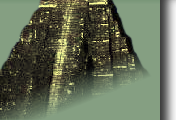January 5th
Bonampak and
Palenque
Today
we venture further into Chiapas, heading toward the northern edge of the
Classic Maya realm. Our first stop
is Bonampak, a small city (town, really) not far from Yaxchilàn. This perhaps otherwise unremarkable
site is known for the fabulous murals in one of the temples, still visible in
their full colors today. Three
small vaulted rooms tell the story of a ruler’s accession, a terrible battle
that he eventually won, and the following celebrations. The detail is exquisite – facial
expressions and characteristics are clear. The battle scene in particular shows a sense of movement and
proportion not clear on the more stylized stela.
It
is a bit amazing that these unique treasures have survived both nature and
nefarious humans. Until quite
recently, it could only be reached by way of a 10-kilometer hike through the
territory of the vaguely tolerant Lakondon tribe. Some of the monuments are kept behind locked screens, which
seem to serve only to discourage honest tourists rather than deter serious
looters. The murals are watched,
but are not covered or shielded in any way. Now that a road has been built, traffic may actually cause
more harm than good to this particular site. The jungle is actually rather protective.
In the afternoon, we come to the prize of the Mexican Mayan sites – Palenque. Not only a significant archeological site, this is also the center of much of the analysis of the Mayan script, due in part to the many remaining examples available for study. Here we return to the well-organized and well-marked genre of sites. Palenque is a very different type of Mayan city, clearly influenced by multiple architectural styles. The tower of the palace is absolutely unique, and even the palace with its many small rooms and courtyards is very unusual. Most other Mayan buildings have only a very few rooms, much of the living space being elsewhere. This is more a castle of the medieval European sense, an analogy the somewhat Arabic-flavored arches only serve to strengthen. Others of the key buildings hark to Yaxchilàn, with the same honeycombing and similar use of stone door lintels. There are stelae here as well, of course, but these figures are much larger, and they are placed in courtyards rather than in plazas.




